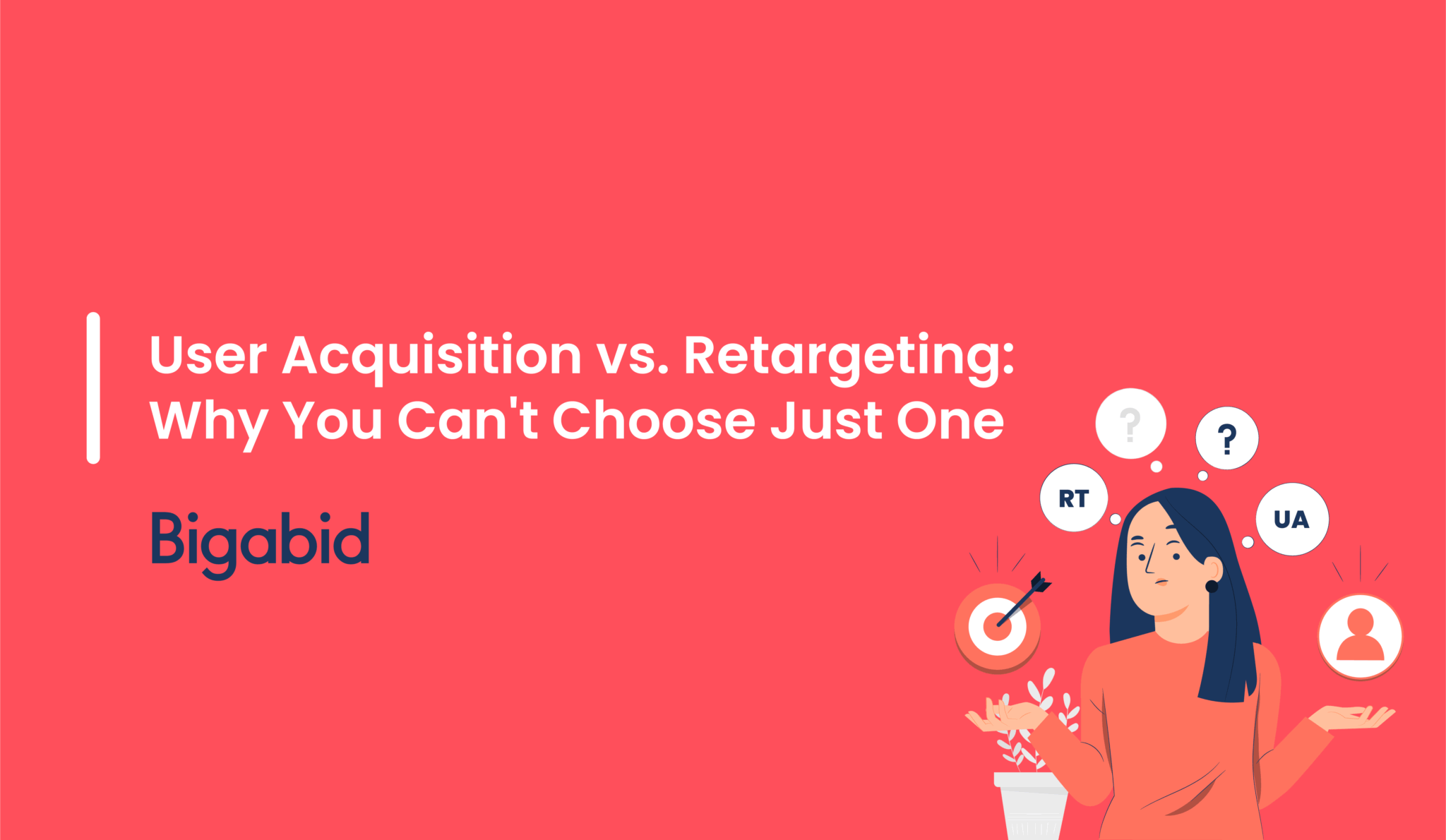
The debate rages on in mobile marketing circles: should you focus your budget on user acquisition or retargeting? It’s a question that surfaces in every campaign planning meeting, echoes through conference panels, and sparks heated discussions on industry forums.
Here’s the uncomfortable truth most marketers don’t want to admit: framing this as an either-or decision is setting your app up for failure.
Picture this scenario: You’ve just landed a dream marketing role at a promising mobile app company. The CEO pulls you aside during your first week and drops the question that every mobile marketer dreads: “Should we focus on getting new users or re-engaging the ones we already have?” Your answer to this question will either demonstrate strategic thinking or reveal a fundamental misunderstanding of how successful mobile marketing actually works.
The reality is that user acquisition and retargeting aren’t competing strategies—they’re complementary forces that create compound growth when executed together. Choosing between them is like asking whether your heart or lungs are more important. Both are essential, and the magic happens when they work in perfect harmony.
This blog dives deep into why the user acquisition vs. retargeting debate misses the point entirely, explores how these strategies amplify each other’s effectiveness, and reveals why the most successful mobile apps treat them as inseparable components of a unified growth engine.
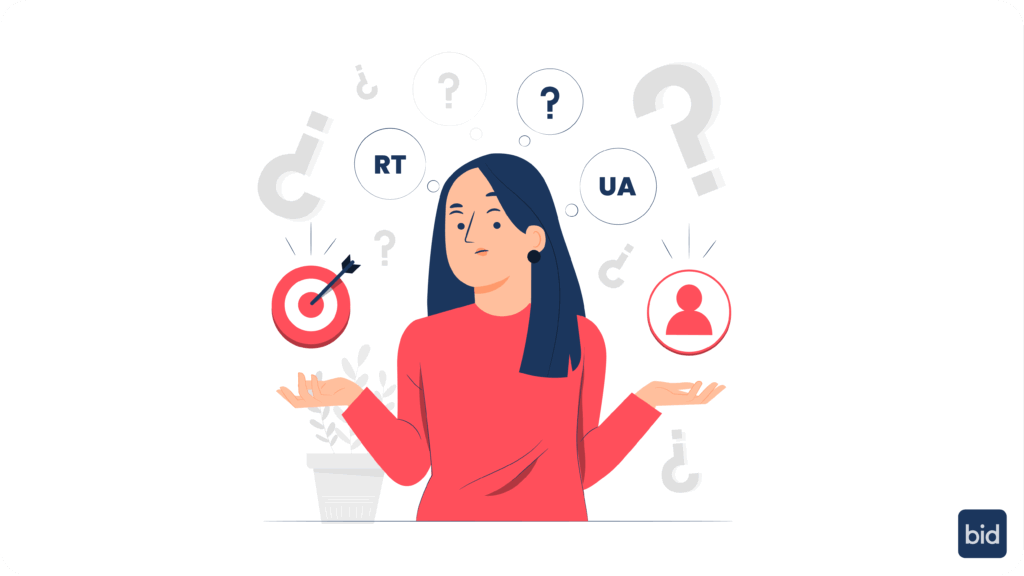
Let’s address the elephant in the room: the persistent myth that user acquisition and retargeting represent competing budget priorities that force marketers into impossible trade-offs.
This misconception stems from the traditional marketing mindset where customer acquisition and retention were handled by separate teams with distinct budgets and conflicting incentives. Acquisition teams focused on volume metrics and cost-per-install targets, while retention specialists obsessed over engagement rates and lifetime value calculations. These silos created an artificial competition for resources that fundamentally misunderstands how modern mobile users interact with apps.
The truth is more nuanced and considerably more powerful. User acquisition and retargeting operate on different timelines but serve the same ultimate objective: building a sustainable base of high-value users who generate meaningful revenue over extended periods. They’re not competing strategies—they’re sequential phases of a continuous growth cycle.
Consider the typical mobile app user journey. Someone discovers your app through a user acquisition campaign, downloads it with genuine interest, and then… life happens. They get distracted by work deadlines, family obligations, or simply the dozens of other apps competing for their attention. According to industry data, the average user opens an app 9-10 times daily, but that usage is concentrated among a small number of preferred apps.
Without retargeting, that initial user acquisition investment essentially evaporates. You’ve paid to acquire a user who tried your app once and then forgot about it entirely. The cost-per-install was wasted because it never converted into sustained engagement or revenue generation.
Conversely, retargeting without fresh user acquisition creates a declining asset base. Even the most sophisticated retargeting campaigns can’t overcome natural user churn indefinitely. Users graduate from apps, change life circumstances, or simply move on to new interests. Your retargeting audience shrinks over time unless it’s continuously replenished with new users from acquisition campaigns.
The most successful mobile marketing strategies recognize this interdependency and design campaigns that amplify both acquisition and retention simultaneously. They understand that every dollar spent on user acquisition is an investment in future retargeting inventory, while every retargeting success validates the quality of acquisition targeting and improves overall campaign economics.
This integrated approach transforms marketing from a cost center focused on vanity metrics into a profit center that generates compound returns. When user acquisition and retargeting work together, they create virtuous cycles where better acquisition targeting improves retargeting performance, and retargeting insights refine acquisition strategies.

User acquisition represents the fundamental growth engine that transforms your app from a hidden gem into a thriving ecosystem with sustainable momentum.
Effective user acquisition goes far beyond simply driving app downloads. Modern acquisition strategies focus on attracting users who demonstrate genuine affinity for your app’s core value proposition and exhibit behavioral patterns suggesting long-term engagement potential. This shift from quantity-focused to quality-focused acquisition fundamentally changes how successful marketers approach campaign design and optimization.
The evolution of acquisition targeting has become remarkably sophisticated. Today’s campaigns leverage behavioral prediction models that identify users based on subtle digital footprints indicating genuine interest in your app category. Instead of targeting broad demographic groups, advanced acquisition campaigns identify users who exhibit specific behavioral patterns—like engagement with competitor apps, content consumption habits, or device usage patterns—that correlate with successful long-term app adoption.
Creative optimization has transformed from simple A/B testing to predictive creative matching. Modern acquisition campaigns use machine learning to predict which creative elements will resonate with different user segments before the ads are even served. This approach dramatically improves both conversion rates and user quality by ensuring that acquisition creatives attract users whose expectations align with your app’s actual experience.
Attribution and measurement capabilities have adapted to privacy-first environments through sophisticated modeling approaches. While traditional tracking methods have become limited, acquisition campaigns now use statistical modeling, incrementality testing, and cohort analysis to understand true campaign effectiveness. These methods often provide more accurate insights into campaign performance than traditional last-click attribution ever could.
Cross-platform acquisition strategies recognize that modern users discover apps through complex, multi-touchpoint journeys. Successful acquisition campaigns coordinate messaging across social media, search, connected TV, and emerging channels to create consistent brand experiences that guide users toward conversion regardless of where they first encounter your app.
The most effective acquisition campaigns also consider post-install engagement from the very beginning. They use lookalike modeling based on your highest-value existing users, ensuring that new acquisitions share behavioral characteristics with users who actually generate revenue. This approach improves both immediate conversion rates and long-term user lifetime value.
Budget allocation strategies have evolved beyond simple cost-per-install optimization toward predictive lifetime value modeling. Advanced acquisition campaigns adjust bidding based on predicted user value rather than immediate conversion costs, enabling more sophisticated budget allocation that maximizes long-term ROI rather than short-term efficiency metrics.
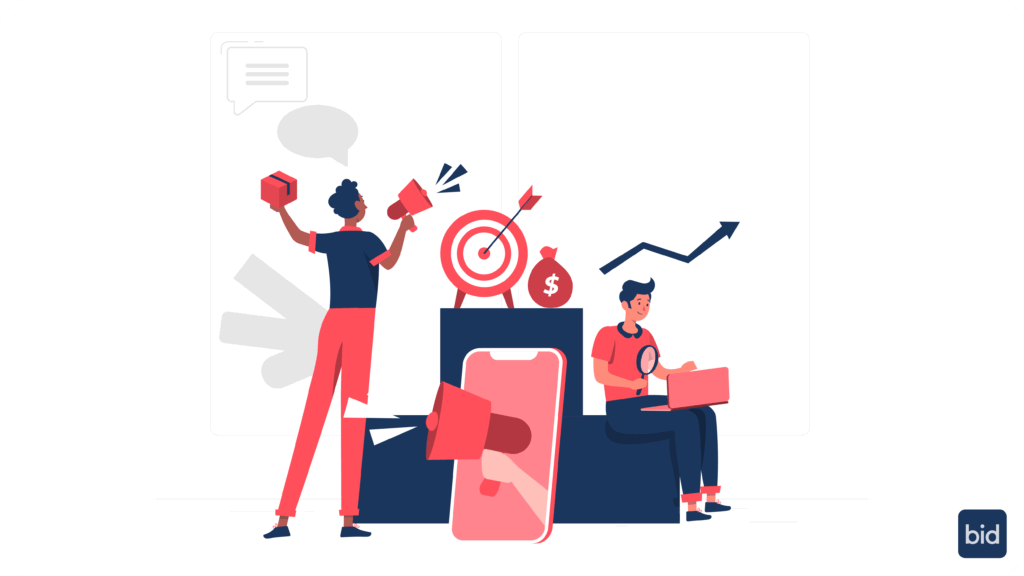
While user acquisition builds your foundation, retargeting transforms dormant potential into active revenue generation by re-engaging users who’ve already demonstrated interest in your app.
The power of retargeting lies in its ability to reach users at optimal moments when they’re most receptive to re-engagement. These aren’t cold prospects who need convincing—they’re warm audiences who’ve already experienced your app’s value proposition and simply need the right trigger to return and deepen their engagement.
Behavioral segmentation has revolutionized retargeting effectiveness by moving beyond simple recency-based targeting toward sophisticated user journey mapping. Modern retargeting campaigns identify specific user segments based on their in-app behavior patterns—users who completed onboarding but never made a purchase, users who made one purchase but haven’t returned, or users who engage deeply but haven’t explored premium features.
Dynamic creative optimization enables retargeting campaigns to deliver personalized messaging that reflects each user’s specific app experience. Instead of generic “come back” messages, sophisticated retargeting shows users content directly related to their previous activities, preferences, and demonstrated interests within the app.
Cross-device retargeting capabilities ensure that re-engagement efforts reach users regardless of which device they’re currently using. Someone who downloaded your app on their phone but primarily uses tablets in the evening can be reached with retargeting ads optimized for their preferred device and usage context.
Timing optimization has become incredibly sophisticated, using machine learning to predict when individual users are most likely to be receptive to re-engagement messages. These systems analyze patterns in user behavior, external factors like day of week and time of day, and contextual signals to deliver retargeting ads at moments of maximum impact.
The most effective retargeting campaigns also incorporate progressive engagement strategies that guide users through increasingly deep app interactions. Initial retargeting might focus on simple app opens, while subsequent campaigns encourage specific in-app actions that correlate with long-term retention and monetization.
Measurement and attribution for retargeting campaigns have adapted to privacy constraints through incremental lift testing and statistical modeling. These approaches provide clear insights into retargeting effectiveness while respecting user privacy preferences and regulatory requirements.
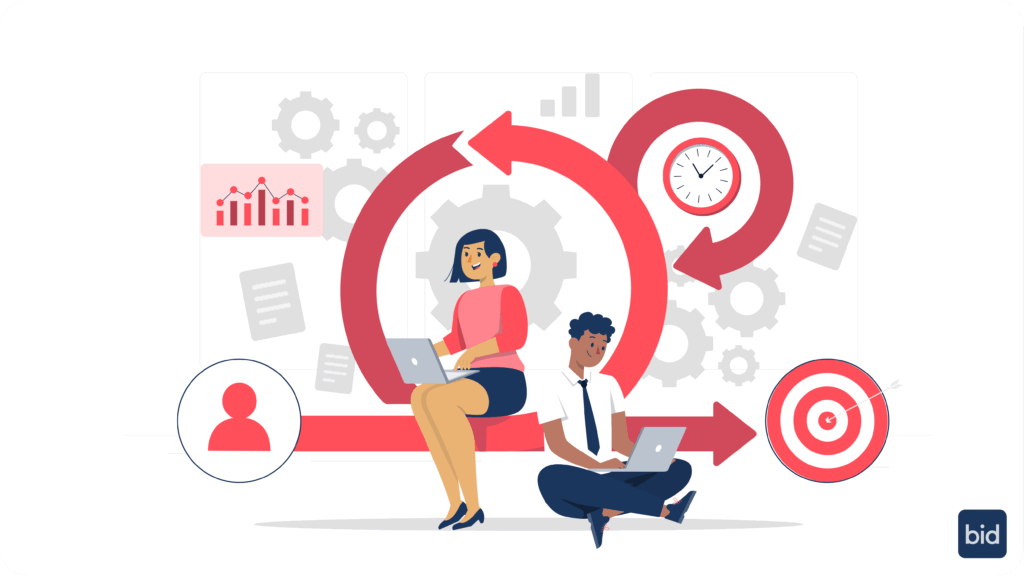
Here’s where the technical magic happens, and why treating user acquisition and retargeting as integrated systems creates exponential performance improvements.
Data feedback loops create the foundation for this integration. User acquisition campaigns generate behavioral data about which targeting parameters produce the highest-quality users. This data directly informs retargeting audience segmentation, enabling more precise identification of users worth re-engaging. Simultaneously, retargeting campaign performance provides insights into user quality that refine acquisition targeting parameters.
Predictive modeling systems use acquisition and retargeting data together to create comprehensive user value predictions. These models analyze the complete user journey—from initial acquisition touchpoints through long-term engagement patterns—to predict lifetime value with remarkable accuracy. This unified view enables sophisticated bidding strategies that optimize for true user value rather than individual campaign metrics.
Cross-campaign attribution modeling tracks user interactions across both acquisition and retargeting touchpoints to understand the complete contribution of each marketing channel. These systems reveal how acquisition and retargeting campaigns influence each other, enabling budget allocation decisions based on total marketing system performance rather than individual campaign ROI.
Audience intelligence platforms combine acquisition and retargeting data to create rich user profiles that inform creative development, targeting refinement, and product development decisions. These integrated insights often reveal user behavior patterns that wouldn’t be visible when analyzing acquisition or retargeting data in isolation.
Real-time optimization engines adjust both acquisition and retargeting campaigns based on unified performance signals. When retargeting campaigns identify particularly valuable user segments, acquisition campaigns automatically increase bidding for similar audiences. When acquisition campaigns discover new high-performing targeting parameters, retargeting campaigns expand their audience definitions to include similar users.
Creative testing frameworks coordinate messaging across acquisition and retargeting campaigns to ensure consistent user experiences while testing different value propositions and engagement strategies. This integrated approach often reveals creative elements that work effectively across both acquisition and retargeting, simplifying creative production while improving overall campaign performance.
Machine learning systems trained on combined acquisition and retargeting datasets develop more sophisticated user behavior predictions than systems optimizing for individual campaign types. These unified models often discover non-obvious correlations between acquisition characteristics and long-term engagement patterns that dramatically improve overall marketing effectiveness.
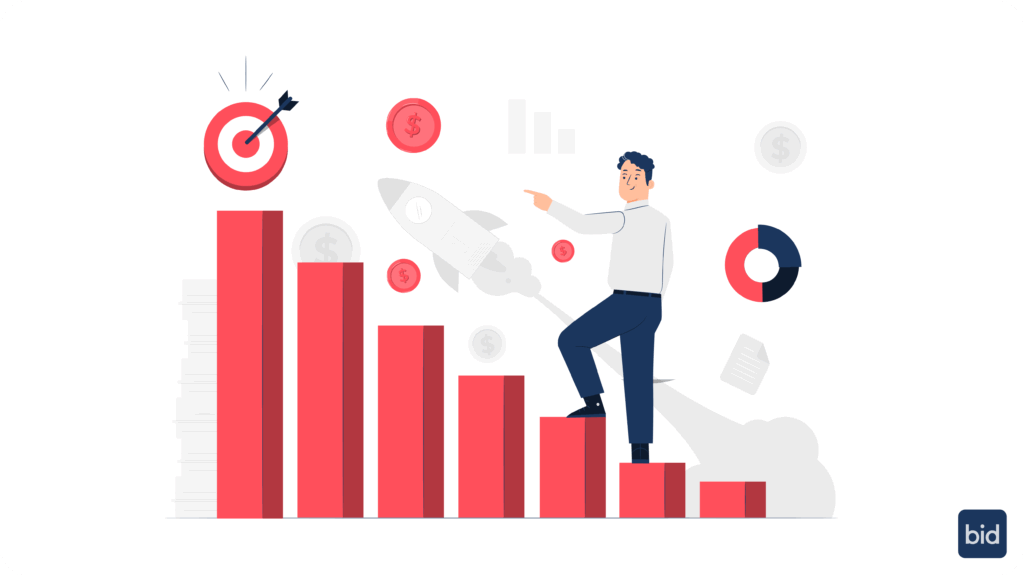
The most compelling argument for integrated user acquisition and retargeting strategies comes from the compound growth effects that emerge when these approaches work together seamlessly.
Audience quality amplification occurs when retargeting performance data informs acquisition targeting refinements. As retargeting campaigns identify which acquired users generate the highest lifetime value, acquisition campaigns can adjust their targeting to attract more users with similar characteristics. This creates a virtuous cycle where acquisition quality continuously improves based on long-term user behavior insights.
Creative performance optimization benefits from the expanded testing opportunities that integrated campaigns provide. Creative elements that perform well in acquisition campaigns can be adapted for retargeting use, while retargeting creative insights often reveal messaging approaches that improve acquisition performance. This cross-pollination accelerates creative optimization timelines and reduces overall creative production costs.
Budget efficiency improvements emerge from understanding the total marketing system ROI rather than individual campaign performance. Budget allocation decisions based on integrated performance data often reveal opportunities to shift spend between acquisition and retargeting that dramatically improve overall marketing effectiveness.
User journey optimization becomes possible when marketing campaigns coordinate across the complete user lifecycle. Instead of treating acquisition and retention as separate processes, integrated approaches design user experiences that smoothly transition from acquisition through long-term engagement, reducing friction points that cause user churn.
Data-driven product development insights emerge from analyzing combined acquisition and retargeting performance data. These insights often reveal user behavior patterns and preferences that inform product roadmap decisions, creating alignment between marketing strategy and product development priorities.
Competitive advantage acceleration occurs when integrated marketing approaches enable faster learning cycles and more sophisticated optimization than competitors using siloed strategies. The compound learning effects often create sustainable competitive advantages that become increasingly difficult for competitors to replicate.
Market expansion opportunities become visible when integrated data reveals user segments or behavioral patterns that suggest new market opportunities or product extensions. These insights often emerge from cross-campaign analysis and wouldn’t be visible when analyzing acquisition or retargeting data separately.
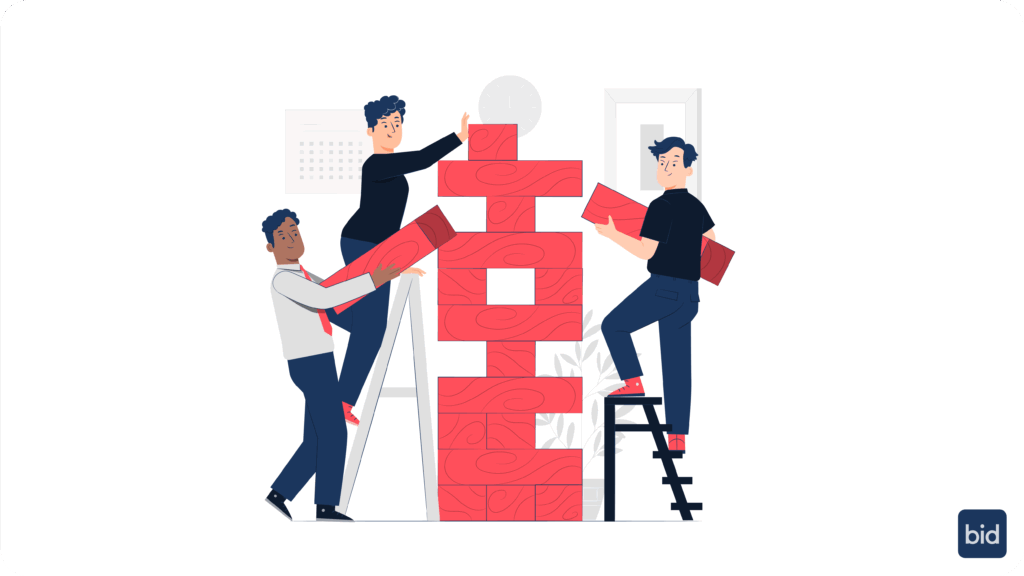
Successfully implementing integrated user acquisition and retargeting requires strategic planning that considers both immediate execution and long-term optimization opportunities.
Data infrastructure planning ensures that user behavior data flows seamlessly between acquisition and retargeting systems. This foundation enables the sophisticated analysis and optimization that drives integrated campaign performance. The most successful implementations invest in unified data platforms that provide real-time insights across all marketing activities.
Campaign coordination frameworks establish processes for sharing insights and optimization opportunities between acquisition and retargeting teams. These frameworks often include regular cross-team reviews, shared performance dashboards, and coordinated testing schedules that maximize learning opportunities.
Audience development strategies create systematic approaches for building retargeting audiences through acquisition campaigns while simultaneously using retargeting insights to refine acquisition targeting. These strategies often include audience size targets, quality thresholds, and refresh timelines that ensure optimal audience composition.
Creative development processes coordinate messaging and visual elements across acquisition and retargeting campaigns to ensure consistent user experiences while testing different engagement strategies. Successful implementations often use creative brief templates that consider both acquisition and retargeting use cases from the initial concept development stage.
Budget allocation methodologies balance acquisition and retargeting investment based on business objectives, user lifecycle characteristics, and market opportunities. These methodologies often include dynamic budget adjustment triggers that respond to performance changes and market conditions.
Performance measurement frameworks track both individual campaign metrics and integrated system performance to ensure optimization decisions consider total marketing ROI. These frameworks typically include custom attribution models that account for cross-campaign interactions and long-term user value generation.
Testing and optimization protocols coordinate experimentation across acquisition and retargeting campaigns to maximize learning opportunities while minimizing test interference. These protocols often include shared testing calendars, standardized measurement approaches, and systematic knowledge sharing processes.

Understanding industry performance standards helps establish realistic expectations and identify optimization opportunities for integrated marketing strategies.
Integrated campaign performance typically shows meaningful improvements in user quality metrics compared to siloed approaches. Companies implementing coordinated acquisition and retargeting strategies often report improvements in user lifetime value, retention rates, and overall marketing ROI.
Cost efficiency gains emerge from reduced user acquisition costs and improved retargeting performance when campaigns work together effectively. The compound effects often result in meaningful improvements in blended cost-per-acquisition and return on ad spend metrics.
User engagement improvements reflect the enhanced user experiences that result from coordinated marketing messages and optimized user journeys. Integrated approaches often achieve higher session frequencies, longer session durations, and increased in-app conversion rates.
Revenue attribution becomes more accurate when marketing systems track user value generation across the complete lifecycle rather than attributing revenue to individual campaigns. This improved attribution often reveals the true value of marketing investments and enables more sophisticated budget allocation decisions.
Scaling efficiency benefits emerge as integrated systems develop more sophisticated optimization capabilities over time. Companies with mature integrated strategies often achieve consistent performance improvements as their systems accumulate more data and refine their predictions.
Cross-platform performance consistency improves when integrated strategies coordinate messaging and optimization across multiple advertising channels. This consistency often results in more predictable campaign performance and reduced optimization complexity.
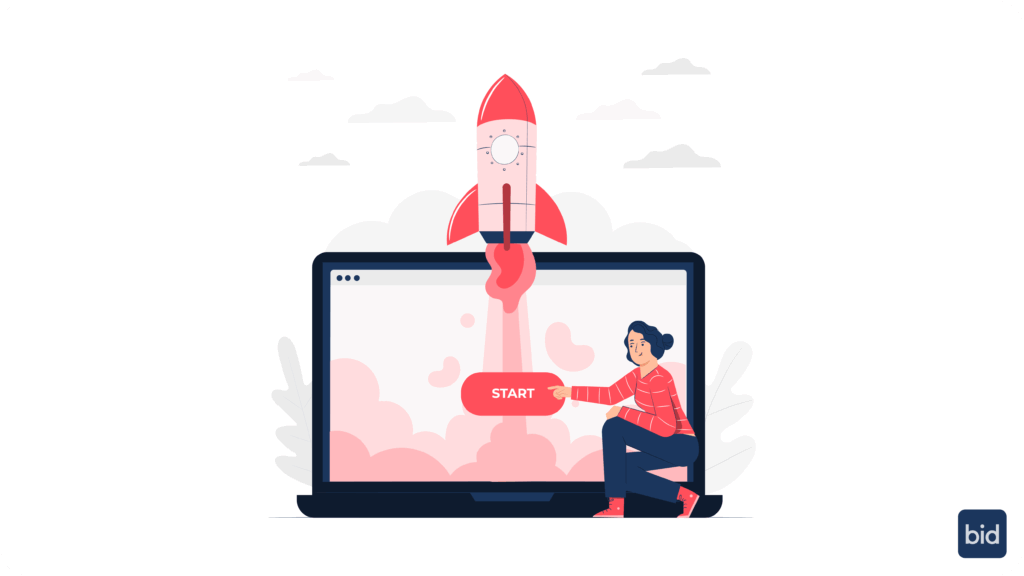
The mobile marketing landscape has evolved beyond the point where user acquisition and retargeting can be treated as separate, competing priorities. The most successful apps understand that these strategies are complementary forces that create exponential growth when properly integrated.
While your competitors debate whether to focus on acquisition or retargeting, you have the opportunity to build marketing systems that leverage both strategies to create compound growth effects. The data is clear: integrated approaches consistently outperform siloed strategies across every meaningful metric.
The question isn’t whether you should invest in user acquisition or retargeting—it’s whether you’re ready to build marketing systems sophisticated enough to maximize both simultaneously.
At Bigabid, we understand that the future of mobile marketing belongs to platforms that seamlessly integrate user acquisition and retargeting into unified growth engines. Our advanced DSP platform doesn’t force you to choose between strategies—it optimizes both simultaneously to maximize your app’s growth potential.
Our neural network-powered systems analyze user behavior patterns across the complete lifecycle to identify high-value acquisition opportunities while simultaneously optimizing retargeting campaigns for maximum engagement. We don’t just run campaigns—we build integrated marketing systems that create sustainable competitive advantages.
Whether you’re launching user acquisition campaigns to build your foundational audience or developing sophisticated retargeting sequences to maximize user lifetime value, our platform treats these activities as interconnected components of your growth strategy.
The most successful mobile apps aren’t choosing between user acquisition and retargeting—they’re choosing partners who understand how to make both strategies work together seamlessly.
Ready to stop choosing between user acquisition and retargeting?
Get in touch with Bigabid today. Let’s build an integrated marketing strategy that transforms both your acquisition and retention into compound growth engines.